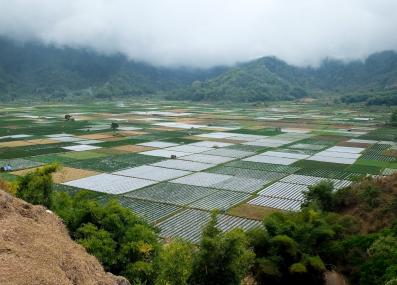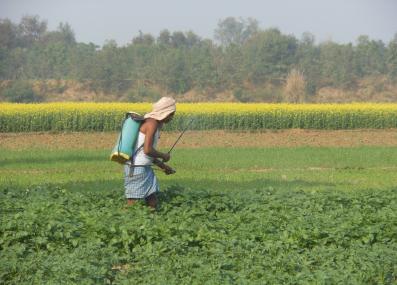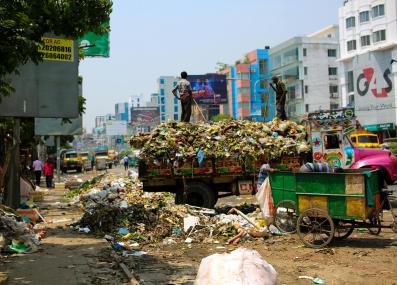Have a question?
Why have I heard that eating meat is bad for the climate?
Meat directly produces greenhouse gas emissions and requires more land and other resources than plant-based foods.
March 16, 2021
All kinds of agriculture, from raising animals to growing crops, affect the climate in some way. “Food production is responsible for greenhouse gas emissions as it uses machinery, entails land conversion and animal emissions, and requires transportation and storage,” says Elodie Blanc, research scientist at the MIT Joint Program on the Science and Policy of Global Change and fellow at Motu Economic and Public Policy Research. “Those greenhouse gases contribute to global warming.” The machines and fertilizers used on farms, and the trucks and ships that transport food, add greenhouse gases like carbon dioxide (CO2) to the atmosphere directly. Clearing forests and wetlands for farming has a more indirect effect, removing trees and soils that would otherwise store carbon and keep it out of the atmosphere.
None of this is unique to meat—but meat demands more of all these resources than crops do. Animals need to eat, so farmers must use fertilizers, machinery and land to grow feed for their animals. Animals, especially cattle, also need a lot of land. The large majority of deforestation in the Amazon region, for instance, is due to farmers clearing land for cattle ranching.1
Meat also contributes to climate change in one way most plant-based foods do not: animals (especially ruminants like cows and sheep) directly release the greenhouse gas methane as they digest their food. Methane is a short-lived greenhouse gas, but it’s also a powerful one: while it persists in the atmosphere, it traps around 100 times as much heat as carbon dioxide.2
Taken together, this all means that meat produces far more greenhouse gases than plant crops do. A recent study showed that a pound of beef produces, on average, around 15 times as much CO2 as a pound of rice3—and around 60 times as much as a pound of wheat, corn or peas.4
This is why some people have chosen to eat less meat to help fight climate change. But there are other changes people can make to their diets that also reduce emissions. Blanc’s advice is to “favor plant-based foods that are in season. Eat whole grain, so as not to waste the nutrient-rich part of the grain. Reduce food waste and compost organic material.” These simple changes will cut down on the resources used to grow the food you eat, and the distance it has to be shipped before it reaches your plate. They also cut down on waste, both before and after you buy your meals, and ensure that this waste releases less methane (by composting it instead of putting it in a landfill).5
Unfortunately, other common tips for changing our diets turn out to be a mixed bag. For instance, says Blanc, “buying local also reduces transportation related emissions. But different regions are better suited to some crops or animals, and trying to grow local can do more harm than good. If, for instance, producing locally entails growing tomatoes in greenhouses that need to be heated, then the environmental footprint will be much higher than growing them in a suitable region and transporting them, especially if they're transported by boat.” Organic food also has its climate problems. “Organic is great, as it aims at reducing harmful fertilizers and pesticides,” says Blanc. “But it requires more land due to lower yields, so may entail higher greenhouse gas emissions.”
So if you’re looking for the clearest way to have a more climate-friendly diet, cutting down on meat is likely your best bet. You won’t have to worry about exactly where and how your food was grown to be sure you’re making reductions in your greenhouse gas footprint. And the individual reductions can be significant: well over half of the CO2 emissions from the average American diet are a result of eating meat—and 45% come from beef alone.6 According to one recent study, going vegetarian for a year would save the average American over one metric ton of CO2 emissions,7 the equivalent of driving 2475 fewer miles.8
Submit your own question to Ask MIT Climate
Get the latest from Ask MIT Climate monthly in your inbox
1 Yale University, Global Forest Atlas. Accessed February 5, 2021.
2 Comparisons between different greenhouse gases take into account both how long they last in the atmosphere, and how much heat they reflect back to Earth while they're there. So while methane is 100 times as potent as CO2, one ton of methane is considered "equivalent" to just 25 tons of CO2. You can learn more about these equivalencies in our Greenhouse Gases Explainer.
3 Or technically, CO2-equivalent emissions. This accounts for the fact that some of the greenhouse gases produced in agriculture are actually methane or nitrous oxide.
4 Poore, J. and T. Nemecek. "Reducing food's environmental impacts through producers and consumers." Science Vol. 360 Issue 6392, June 2018. doi:10.1126/science.aaq0216
5 For more on the ways landfills impact greenhouse gas emissions, see "What method of waste disposal is best for the climate?"
6 Heller, Martin C., et al. "Greenhouse gas emissions and energy use associated with production of individual self-selected US diets." Environmental Research Letters Vol. 13 No. 4, Mar. 2018. doi:10.1088/1748-9326/aab0ac
7 Eshel, Gidon, et al. "Environmentally Optimal, Nutritionally Sound, Protein and Energy Conserving Plant Based Alternatives to U.S. Meat." Scientific Reports 9, Aug. 2019. doi:10.1038/s41598-019-46590-1
8 US Environmental Protection Agency: Greenhouse gas emissions from a typical passenger vehicle. Accessed February 5, 2021.









